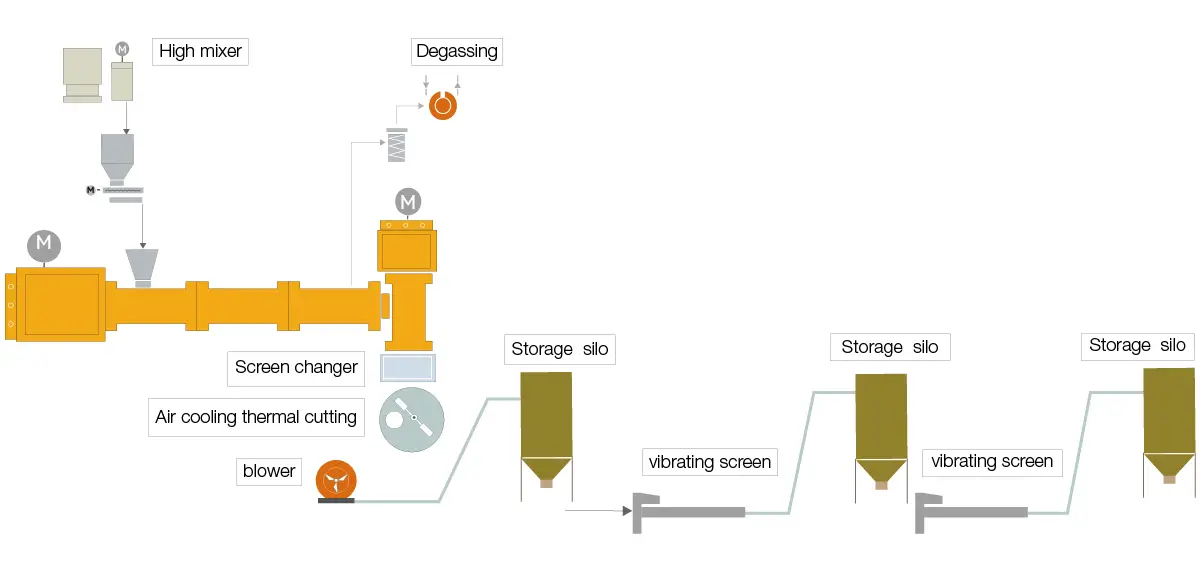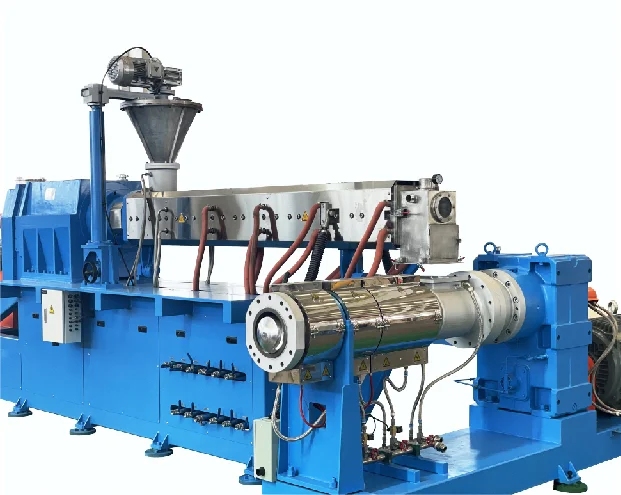
Polyvinyl chloride, referred to as PVC, is a polymer formed by polymerization of vinyl chloride monomer (VCM) in peroxide, azo compound and other initiators or under the action of light and heat according to the mechanism of free radical polymerization. PVC used to be the most widely used general-purpose plastic in the world.
Soft PVC:

Soft PVC is mostly produced with high molecular weight PVC resin, that is, most of them are produced with SG4 type and above resin. Containing more plasticizers, its softness, elongation at break, cold resistance increase, soft texture, good air tightness and water impermeability. Although the electrical insulation is reduced due to the addition of plasticizers, it still maintains a very high electrical insulation. Brittleness, hardness, and tensile strength decrease. Mainly used in wire and cable, agricultural film, packaging film, industrial film, hose, artificial leather, plastic shoes, etc. Processing mainly adopts extrusion, calendering and other processing methods, and a small part adopts injection molding processing.
PVC Pelletizing Modification Method

PVC resin is a polar non-crystalline polymer with a density of 1.38 g/cm3 and a glass transition temperature of 87°C. Therefore, it has poor thermal stability and is not easy to process. It cannot be used directly. It must be modified and mixed with related additives. and fillers can be used. Polyvinyl chloride is divided into rigid PVC and soft PVC according to the amount of plasticizer added.

Xinda Co Kneader
PVC pelletizing compounding system
offer several specific benefits
> Intensive distributive mixing:
The co-kneader design provides high shear mixing, ensuring efficient dispersion of additives and reinforcing agents throughout the PVC resin.
> Uniform, mild shear rates:
Extremely homogenous mixing, no shear spikes, equal treatment of polymer matrix.
> Excellent temperature controlling to prevent the overheat:
XINDA Co-kneader systems feature advanced temperature control systems that allow for precise temperature control during the compounding process. This is critical for ensuring the proper curing of the PVC resin.
> Effective degassing of volatiles:
Retain natural exhaust ports and vacuum exhaust ports to effectively devolatilize, remove impurities and water vapor in the material, and make the material more compact.
> High degree of self-wiping and have no dead spot:
With the rotation and axial reciprocation of the screw, the relative trajectory of the pin and each screw block is curved , and the inner surface of the barrel is swept by the screw, there is no dead angles, so that the screw has good self-cleaning ability, High conveying efficiency and stable and uniform material residence time and other advantages
> Efficient blending of liquid components;
The liquids are directly injected into the melt at the appropriate time and place. There are no losses due to volatilisation and no deposits on metal surface.




